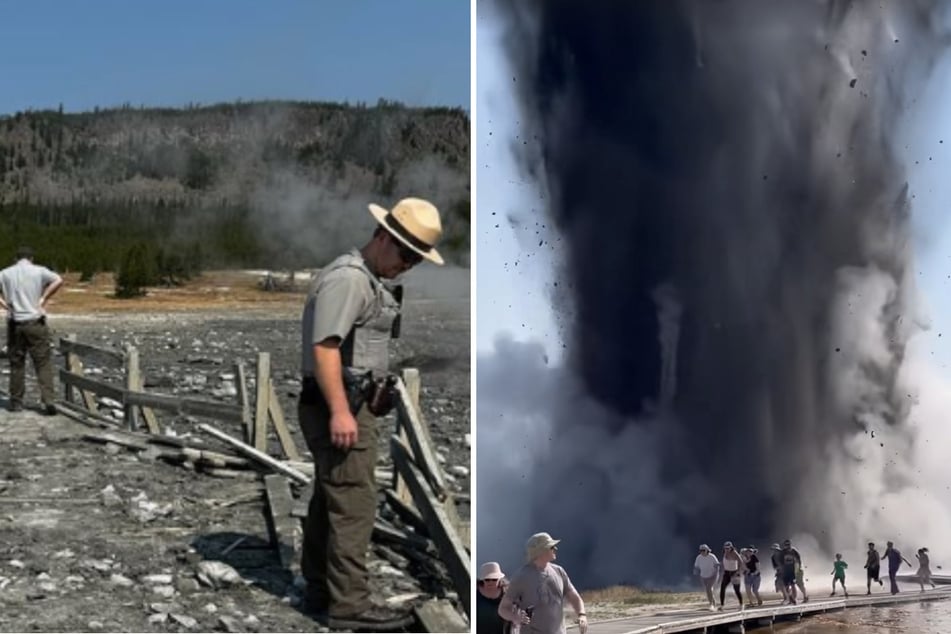Yellowstone Park visitors left terrified by huge hydrothermal explosion captured on camera
Yellowstone National Park, Montana - A spectacular hydrothermal explosion on Tuesday sent visitors to Yellowstone National Park scattering in terror.

At about 10:19 AM, a localized hydrothermal explosion blew boiling water, rocks, and steam sky-high at Yellowstone National Park's Biscuit Basin, which is just north of the park's famous Old Faithful geyser.
A now-viral video taken by park visitor Vlada March showed tourists scattering in fear.
No injuries were reported and the area, including the parking lot and boardwalks, has been temporarily closed for safety reasons.
Yellowstone is home to one of Earth's most active volcanic and hydrothermal systems. The park department shared pictures of the aftermath on Instagram, showing damaged boardwalk covered with gray and black debris.
A hydrothermal explosion, like the one that occurred Tuesday, can happen when the water underwater suddenly turns to steam and forces its way to the surface.
These kinds of phenomena are relatively common occurrences in the park, according to Michael Poland, the scientist in charge at the Yellowstone Volcano Observatory.
He told the New York Times that this particular instance was caused by a localized "plumbing" issue.
The US Geological Survey issued a statement saying that the explosion in Biscuit Basin was not connected to a change in volcanic activity. The last such incident took place in 2009.
Cover photo: Collage: Screenshot/Facebook/Vlada March & Instagram/ Yellowstone National Park
